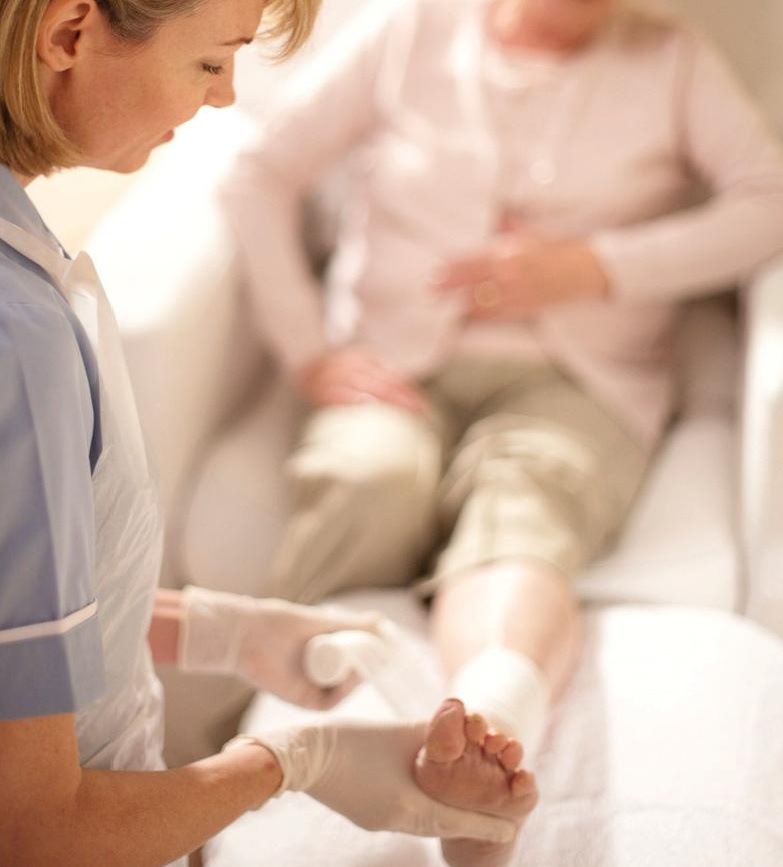Coping with LEG ULCERS

Leisure activities and dementia
A huge review of 38 studies with data on more than two million individuals confirms that people who keep active are less likely to develop dementia. Participation in cognitive, physical and social activities was associated with a 20% reduction in both Alzheimer’s disease and vascular dementia. But it’s unclear if leisure activities protect against dementia, or just that those people destined to avoid it are also the sort who tend to stay active.
Leg ulcers usually develop on the inside of the leg, between the knee and the ankle. Venous leg ulcers are the most common, causing 60% of cases, affecting one in 500 people in the UK, more commonly with age.
They can develop after a minor injury, with persistently high pressure in the leg veins weakening the skin. Symptoms include pain, itching and swelling. There may be discoloured or hardened skin around the ulcer, with a foul-smelling discharge.
See your GP if you think that you have a leg ulcer, as it will need specialist treatment to help healing. Your GP will examine your leg and may carry out additional tests to rule out other conditions.
You’re more at risk of developing one if you previously had deep-vein thrombosis (DVT), or have difficulty walking from arthritis, or have a leg injury, obesity or paralysis, after recent leg surgery or if you have varicose veins.
A WEEKLY DOSE OF INSULIN
Diese Geschichte stammt aus der March 14, 2023-Ausgabe von WOMAN'S WEEKLY.
Starten Sie Ihre 7-tägige kostenlose Testversion von Magzter GOLD, um auf Tausende kuratierte Premium-Storys sowie über 9.500 Zeitschriften und Zeitungen zuzugreifen.
Bereits Abonnent ? Anmelden
Diese Geschichte stammt aus der March 14, 2023-Ausgabe von WOMAN'S WEEKLY.
Starten Sie Ihre 7-tägige kostenlose Testversion von Magzter GOLD, um auf Tausende kuratierte Premium-Storys sowie über 9.500 Zeitschriften und Zeitungen zuzugreifen.
Bereits Abonnent? Anmelden

Your wellbeing
LATEST HEALTH SOLUTIONS FOR YOUR MIND AND BODY

Follow YOUR STAR
Georgie’s new life in Paris was thrilling — but part of her heart was still back home

Fire up A FEAST
Dust off the barbecue and try our tasty summer meals

Sustainable SOAP
Tired of paying for harsh chemicals? English ivy may be the answer for your laundry

Eat to BEAT CANCER
Cases of bowel cancer are on the rise. But what you choose to put on your plate could reduce the risk

Coping with MACULAR DEGENERATION
This common eye condition causes damage to part of the retina and reduces vision

Sicilian TREASURE
A captivating trail of art, culture and cuisine in Sicily's capital, Palermo

Christmas IN JUNE
Santa Claus in a bikini! Had Kathy totally lost the plot?

'The Queen said WE WERE COOL
Angela Rippon on her career, why she's not ready to retire, and Strictly

'I loved the school run second-time round!'
How I dreaded the school run with my own children! I was always running late, either because of writing deadlines or because I hadn't allowed for sheep crossing the lane. Yet now I'm a granny, I love it! I still have the same deadlines, but I am never, ever late for collecting my grandchildren. Actually, I almost feel more responsible for them than my own children, and leave at least 20 minutes earlier than necessary. I already have drinks and healthy snacks in my bag, and a full tank of petrol. Back in the 90s, one of my three was almost late for an exam because I ran out of fuel.
